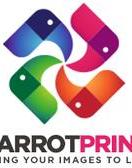Food, glorious food, is their anything better to photograph? Nowadays, it’s customary to snap a shot for Instagram almost every time you eat out. With camera phones at the ready, we’re all amateur food photographers to a degree. But what does it take to launch a successful food photography career?
Are you passionate and talented enough to carve out a photography career in the food industry? For those who dream of working with Michelin-starred restaurants or shooting for cookbooks, the recipe for career success involves a lot of hard work. You’ll also need natural flair for planning and organisation. Sound like you? Here’s how to get started…
What do food photographers do?
There’s no getting round it, food photography is a very competitive field. However, it’s also a varied niche with lots of opportunities and different kinds of work. Many food photographers work on a freelance basis, which means they get to choose the projects they pick up and they enjoy working with different people. They might tackle projects such as photography for adverts or food packaging, shoots for magazines or cookbooks. Some photographers work directly with restaurants, hotels and cafes to produce imagery for their marketing campaigns.
Naturally, this type of work means travel can be a huge part of being a food photographer. But be warned, it’s not simply a case of turning up on location with your camera! Lots of planning goes into food photography, from experimenting with different props and styling through to making small technical changes to get the perfect shot. As well as being a creative job, being a food photographer requires technical skill and a methodical approach.
If you prefer the security of being in an employed position, you could apply to work in house for a publishing house or agency. This means you would enjoy benefits such as sick pay and a pension.
How does food photography compare to other photography careers?
Food photography is all about presenting food as deliciously as possible. You want to entice the senses so people who look at your photographs can imagine the smell and taste of the food. There’s a great deal of skill in capturing foods like oozing cheese or dripping ice creams at their best. Like product photography, lighting is hugely important for food photography. That said, it’s possible to start building your food photography portfolio with very limited equipment. If you have a DSLR, tripod, a light and reflector cards you can achieve good quality shots. You can then add to your tool kit as you earn more money and develop your skills.
Building contacts is also a key part of food photography, both in terms of gaining work and collaborating with other interesting and talented people. Many photographers work with food stylists and on a shoot, you’ll be required to work as part of an extended creative team. Good communication skills and the ability to manage and respond to constructive criticism are therefore pretty important. Being able to manage your time and stay on top of admin tasks are other key skills that are required but often overlooked. If you’re working as a freelancer, basic admin tasks such as submitting and following up on invoices are so important. When you work for different clients you’ll need to really understand their target audience in order to take images that fit the brief. This means an understanding of commerciality is also key.
What qualifications do you need to become a food photographer?
As with other photography careers, formal qualifications are less important than experience, ideas and a good portfolio. It’s perfectly possible to build a successful food photography career with plenty of drive and a willingness to learn.
Starting with a photography college course and a degree qualification gives a great springboard for a food photography career. A formal qualification will familiarise you with the technical aspects of photography and introduce you to different styles. It should also help you to hone your post-editing skills. However, you could also choose to complete food photography workshops or to shadow professional food photographers. If you already have some food photography experience, you could look out for a photography apprenticeship to get you started or try entering food competitions to get your work noticed
As a food photographer, there’s always room for new learning – whether it’s keeping up to date with new technology and changing kit or exploring new photography and food trends. This is just part of the challenge of a career and food photography and there really is nothing quite like the satisfaction of seeing your work in print.
Are you a food photographer or would you like to pursue a career in food photography? Which aspects of food photography do you find the most challenging and which are the most fun?

